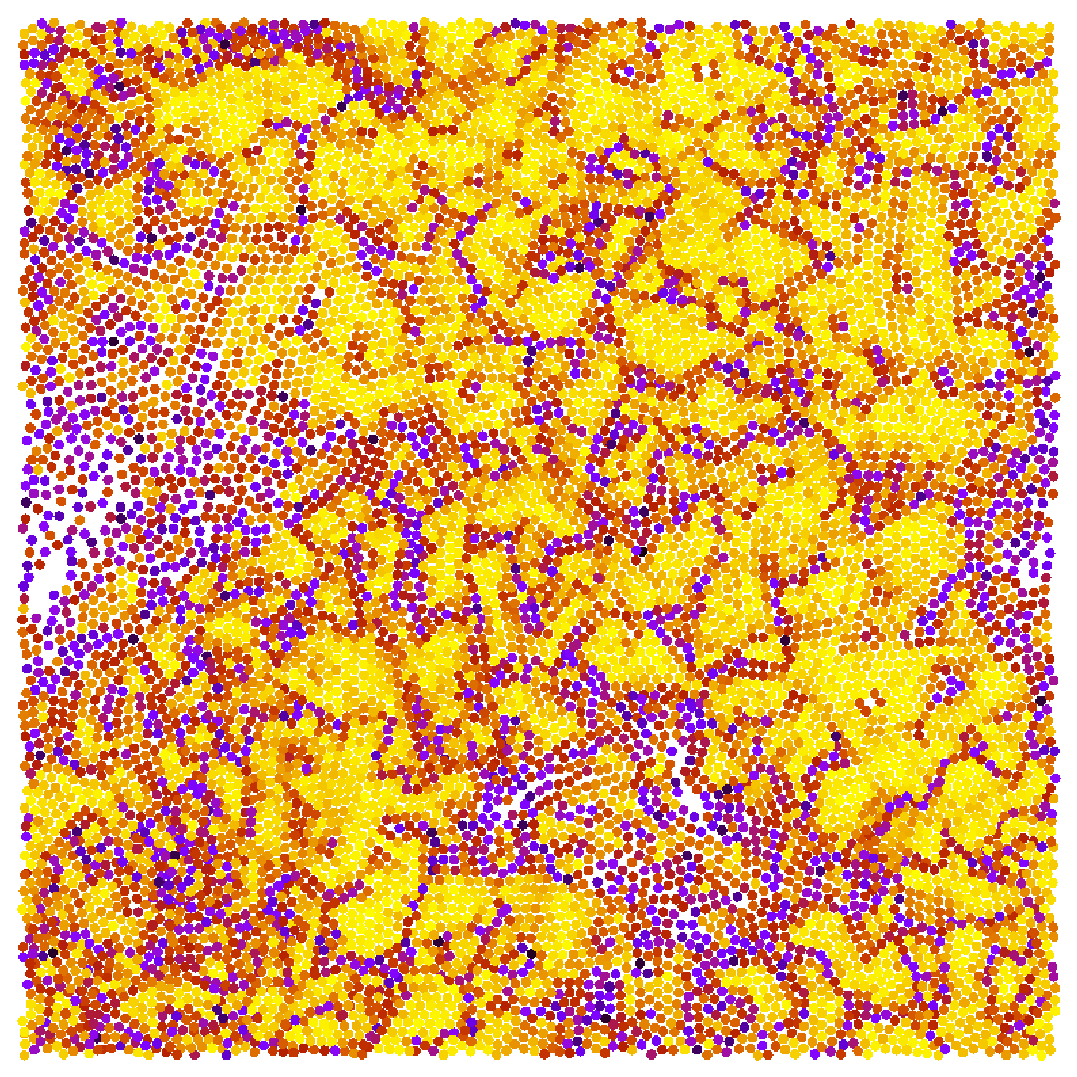Defect-Mediated Phase Transitions in Active Soft Matter
Christoph A. Weber, Christopher Bock and Erwin Frey
Active matter is a fascinating new field in soft matter physics studying the macroscopic properties of interacting active particles, which are individually able to convert energy into directed motion. An initial striking observation – based on computer simulations and hydrodynamic theories – was that active systems in two dimensions show long-range polar order, in stark contrast to thermodynamic equilibrium systems, where such states are prohibited by fundamental theorems (Mermin-Wagner theorem). In collaboration with experimental groups we have recently shown how such order arises in granular systems (Weber et al., PRL 2013) and in vitro motility assays of actin filaments (Schaller et al., Nature 2010). While these theoretical and experimental observations have significantly boosted our understanding of active matter, there is an important drawback: All these conclusions refer to systems at low densities, and the non-equilibrium steady states of collectively moving particles are the active matter analogues of gaseous phases for equilibrium systems.
There is a major lack of understanding of active matter at high densities, where the non-equilibrium steady sates may – in addition to polar order – also exhibit different degrees of liquid crystalline or even crystalline order. Even though first preliminary theoretical studies suggested the interesting possibility of the emergence of translational and orientational order in active particle systems at high densities, a characterization of the nature of these ordered states and the transition between them remained elusive. Importantly, at high densities topological defects may play an important role. And indeed, recent experimental and theoretical studies of active nematic liquid crystals show that activity leads to generation and swarming of topological defects (Sanchez et al., Nature 2012).
In this letter we study how topological defects affect the degree of polar and crystalline order in active matter at high densities. To this end, we analyze a generic agent-based model, which accounts for both polar alignment and shorted-ranged repulsive interaction. We show that, while defects still play a decisive role, the emerging defect dynamics and phase behavior differ qualitatively from their equilibrium analogues. In active systems, the non-equilibrium steady states include different types of polycrystalline phases, and an intriguing crystalline phase with quasi-long-range translational order but completely devoid of any topological defects. Moreover, we find that absence of defects and polar order are mutually exclusive features. When alignment forces dominate over repulsive forces, polar states are favored. The resulting collective particle flux makes the system highly susceptible to the spontaneous formation of grain boundaries and thereby repeatedly creates small crystalline patches. These spontaneous fracture-like processes are accompanied by propagating sound waves. In contrast, in systems with strong repulsive forces the formation of a crystalline state precludes the formation of collectively moving clusters. Surprisingly, the phonon modes in this active crystalline state lead to quasi-long-range order but the fluctuations generated by the active particle motion do not create topological defects.


